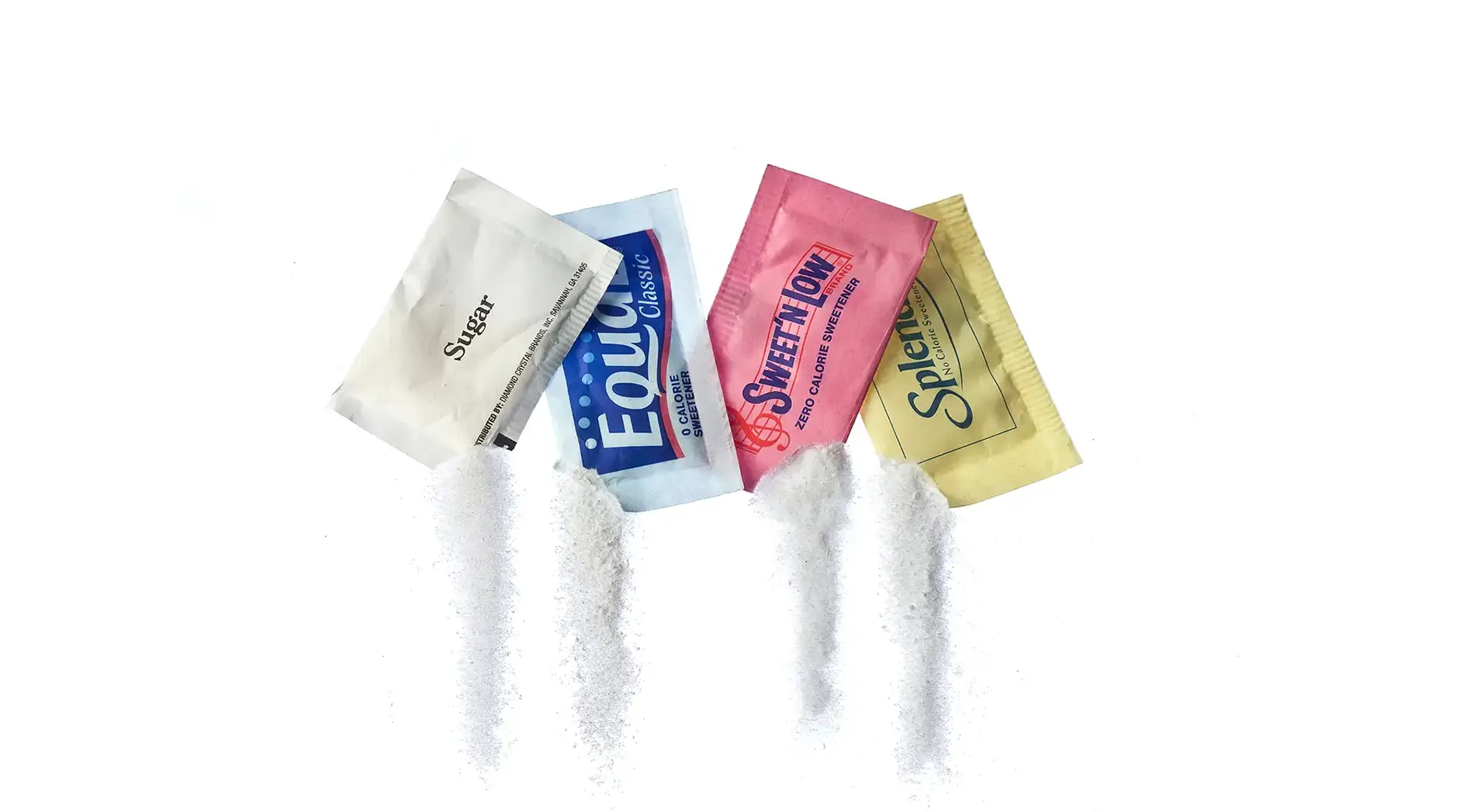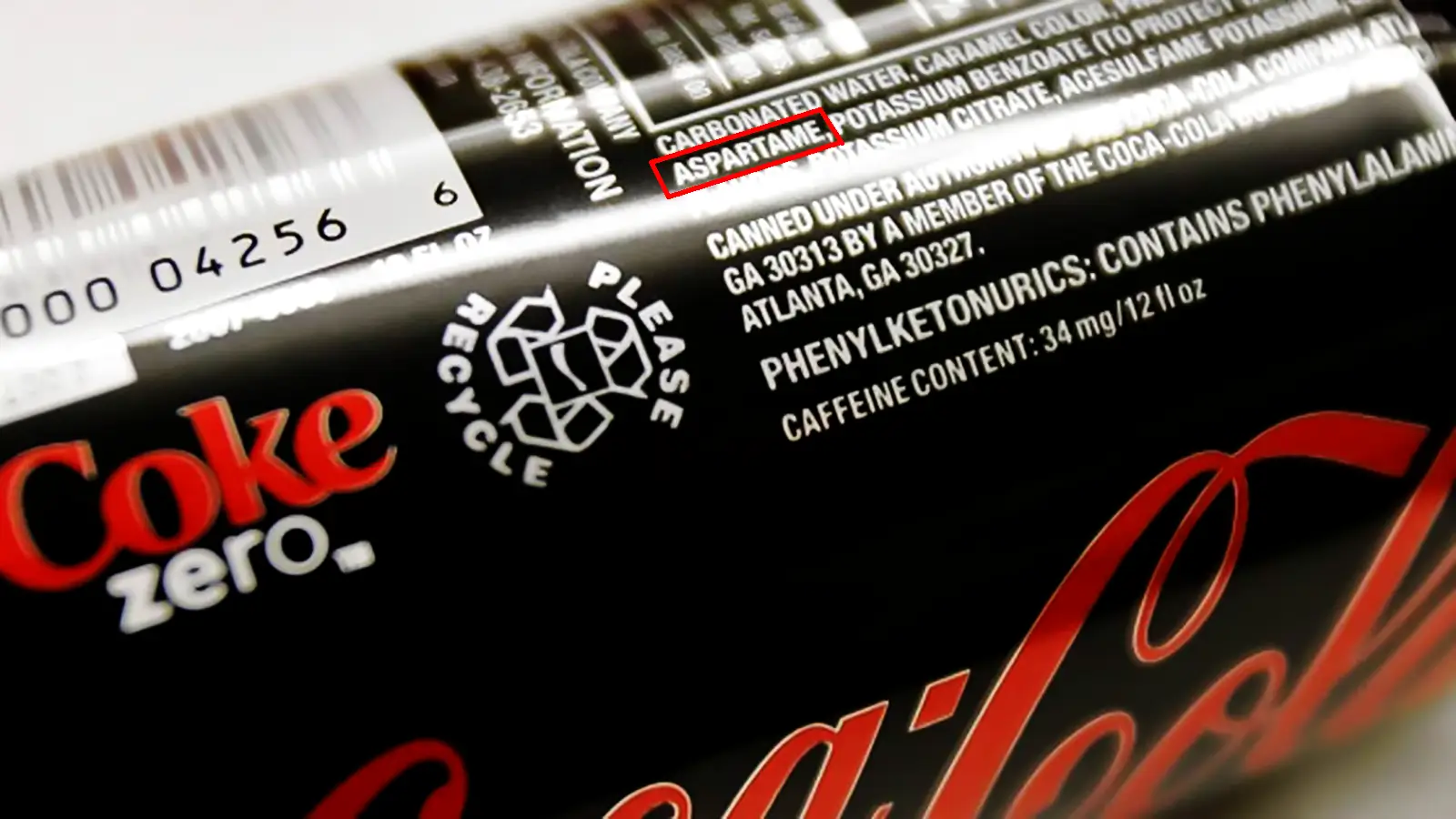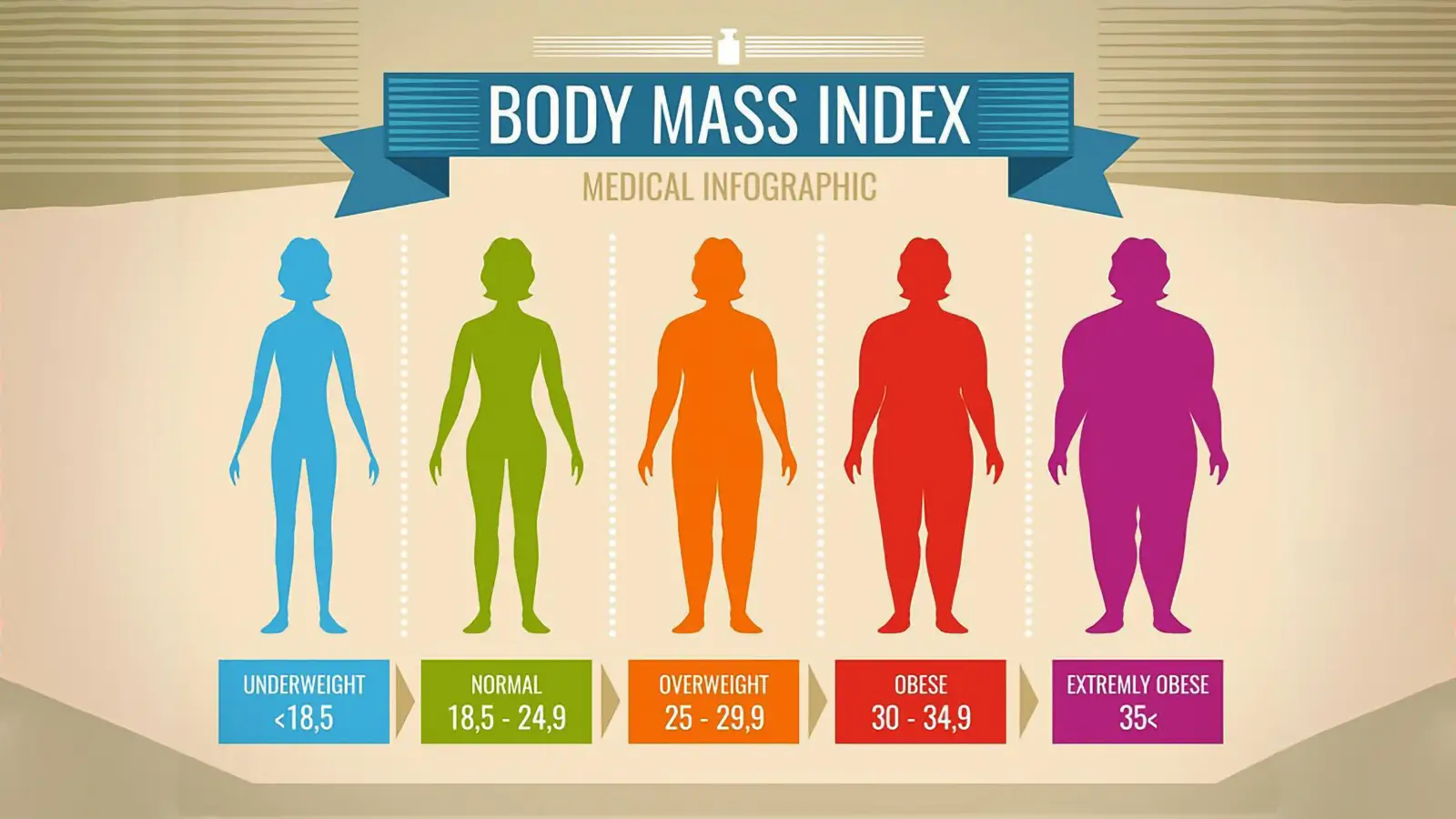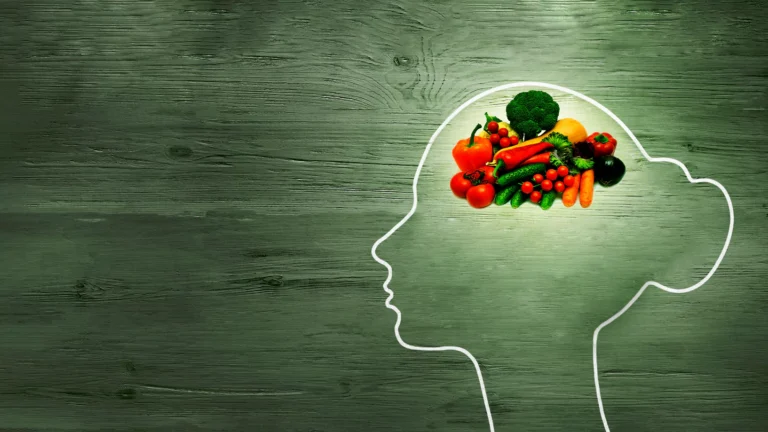Supernormal Stimuli- Binge Eating Disorder and Appetite Regulation
When we see a hamburger, it is supernormal stimuli. Primal urges affect our behavior forcing us into binge eating disorder.
Milos Pokimica
Written By: Milos Pokimica
Medically Reviewed by: Dr. Xiùying Wáng, M.D.
Updated August 4, 2023When we see a hamburger, it is supernormal stimuli, or when we see any food item that does not exist in that form in nature especially if it combines any form of fat and carbohydrates or regular sugar together it is supernormal stimuli. Primal urges or instincts affect our behavior and our reptilian brain and basically control us more than we would like to admit forcing us into binge eating disorder.
Extremely sweet or fatty food that we have today but were not present in nature, captivates the brain reward circuit in much the same way that cocaine and gambling can do. Even just seeing the food will trigger the brain’s response. As quickly as such food meets the tongue, taste buds give signals to different areas of the brain. That will result in a response that will trigger the release of the neurochemical dopamine. Frequently overeating highly palatable foods saturate the cerebellum with a significant amount of dopamine that forces the brain to ultimately adjusts by desensitizing itself, decreasing the number of cellular receptors that identify and respond to the neurochemical. High and constant dopamine level is the form of stimulus that is over-excessive, something called supernormal stimuli.
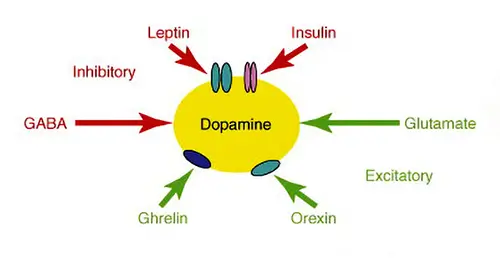
There is a problem with conditioning too. When you spend years working on that promotion or spend years in college and finally get that job or diploma you feel great. It takes time and effort. But when you go to the fridge and open a bag of chips you feel great too. However, there is a problem. In nature, we would have to work very hard to get that bite, and it was not salted or filled with fat and sugar. Alternatively, when we wanted to find a mate, we had to be able to fight off other males. We would have to work for it hard for any reward. It would take significant time and effort.
However, in the modern era, it is effortless. One phone call to the pizza place and that is it. Instantaneously we can reward ourselves with pleasure no time or effort needed. Moreover, there are drugs, movies, video games, alcohol, and gambling. These things are all forms of instant gratification. There are too easy to obtain, and they provide short bursts of pleasure. This conditioning alters our perception and reconfigures our reward centers in the brain. Modern environmental stimulants may activate instinctive responses that evolved before the modern world. When we can get supernormal stimulation all the time effortlessly our brain downregulates the receptors, and we have a problem, we need more. Also, when we do get more, the brain will downregulate the receptors some more, and we again need more. It becomes an addictive behavior before we overdose.
In the book, Wasteland: The (R)Evolutionary Science Behind Our Weight and Fitness Crisis, Harvard psychologist Deirdre Barrett analyzed very well how junk food triggers exaggerated stimulus to natural cravings for salt, sugar, and fats. The issue is that most regular people are not psychologists and can’t detect this in their own behavior.
Supernormal stimuli exist in nature too. When scientists isolate the traits that can trigger certain instincts like colors or shapes or patterns and then apply them to animals, they go behaving extremely instinctively and outside of normal behavior. Instincts had no bounds. Once the researchers isolate the instinctive trigger, they can create greatly exaggerated dummies that animals would choose instead of the realistic alternative. For example, seeing red male stickleback fish would ignore the real rivals and attack wooden replicas with brightly painted underbellies and be even reacting aggressively when the red postal van passed the lab window. Songbirds would abandon their eggs that are pale blue dappled with gray and sit on black polka-dotted fluorescent blue dummies so big that they would continuously slide off. They would prefer to feed fake baby birds with more full and redder mouths than their real ones and the hatchlings would ignore their parents to beg for food from fake beaks with more dramatic markings.
It is easy to assume that these kinds of behaviors reflect some mistake or manipulation but it is far from the truth. The truth is that this is an entirely evolutionary justifiable action and will contribute to the survival of the species. The big colorful egg is a symbol of health for a bird so her instinct is correct and it is conditioned to force her to spare more of her time to go to sit on a black polka-dotted egg because that egg is having more chances for success hatching. In nature, there are no mistakes only in the human interpretation of nature.
Birds will never be exposed to technology, so the supernormal stimuli are positive conditioning for the survival of the species. In a technologically driven modern environment, it is a different story. We have not been adequately adapted in the evolutional sense to our modern environment, and the consequences are terrible.
For example, obesity is an epidemic, and not just obesity, but most of our other health problems as well. All of the so-called diseases of affluence are physiological maladaptations in essence. Why? Because pleasure-seeking actions in all forms drive most of our behavior. It will make us eat even when we are not hungry in pursuit of pleasure and satisfaction. It will make our brain overstimulated in any possible form and way we can think of. The problem is significant on a population scale and can become even worse in specific individuals that have levels of dopamine receptors that are less expressed. It can make them susceptible to compulsive behavior.
Our physiology is not adapted to be continuously bombarded with supernormal stimuli, to have instant gratification in all forms, never to feel hunger, never to have to do any physical activity, and to have a never-ending stream of animal products, sugar, and fat. We act impulsively, emotionally, and instinctively like most other animals because we are conditioned to do it for survival. Like it or not, in the end, this will have lasting health consequences.
Psychophysical dependence on supernormal stimuli is real. Human beings are evolutionarily conditioned for extreme eating because of the scarcity in nature.
For every animal in existence in nature, hunger is the normal state of being. Alternatively, a constant struggle for food would be more precise. For every animal that lives on this planet, food obsession is a daytime job. Most of the time during their lives animals spend searching for food. There are no supermarkets and cans of ready to eat meals. It is the struggle. Moreover, that was a normal condition for humans even today. Well, at least the body physiology part.
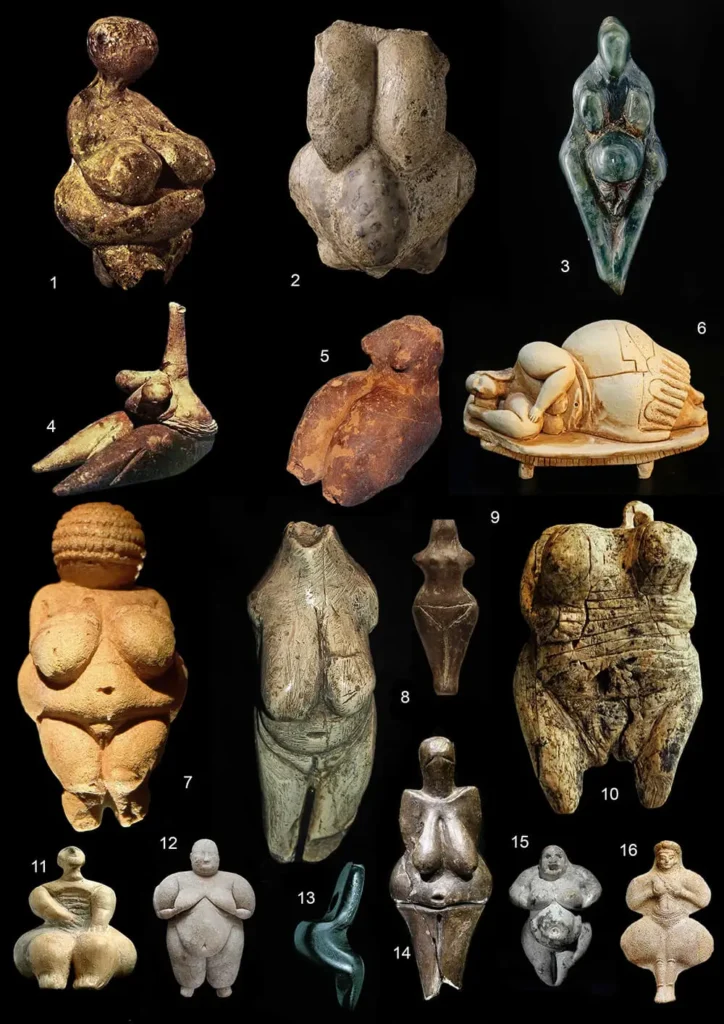
1.Venus of Gagarino, Russia 20,000 BC; 2. Figurine féminine dite manche de poignard de Brassempouy, 23,000 BC; 3. Venus de Losange Italy 25,000 BC; 4. Venus of Tepe Sarab Iran 6500 BC; 5. Neolithic Hassuna Princess „Idol,” 6500-5700 BC Mesopotamia; 6. Malta Venus 4500 BC; 7. Venus of Willendorf Austria 24000 BC; 8. Venus of Moravany Slovakia 23000 BC; 9. Ceramic Figurine of a Woman 5300 BC, The British Museum; 10. Venus from Hohle Fels, Germany 38,000 BC; 11. Cave Ghar Dalam, Malta 5400 BC; 12. Catalhohuk 6000 BC; 13. Venus of Monruz 10,000 BC, Switzerland; 14. Venus of Dolní Vestonice, Czech Republic 29,000 BC; 15. Venus of Anatolia, Turkey 6000 BC; 16. Inanna (Ishtar) Mother Goddess, Mesopotamia 2000 BC.
Our desire and pleasure-seeking behavior are what make us sick. Evolution did not predict electricity and microchips and cars. We are maladapted to our habitat. We have underlined mechanisms that force us to act in an evolutionary protective manner such as overeating food. The not-so-unique obstacle now is that there is no scarcity anymore. Also, even worse, we eat stuff like meat that is not congruent with our physiology. And what is worse we eat it every single meal. And what is even worse we are surrounded by all of the toxic chemicals we never had to deal with in the past, and we do not exercise and move anymore and do not have enough sunlight, and do not have normal relations with other species and other humans. We are technology-dependent, atrophied, and poisoned. We are dependent on our food to be supernormal stimuli and everything around us to be supernormal stimuli. Supernormal is the new normal. Everything has to be supernormal now to be normal. From video games to movies, to drugs to game addiction, to porn addiction, and sex and violence in every frame. Eating kale is not for us anymore. Eating fruit is not for us anymore. The fruit was once upon a time the highest treat we could find in nature. Ultimate dessert. What is fruit today? The hybrid derived from selective breeding is to be sweeter. Had we ever in our life tried real wild fruit without altered genes? Even that over-hybridized variety is no match to pure refined sugar, so we are going to drink colored sugar water like Coke and sodas.
References:
Passages selected from a book: Pokimica, Milos. Go Vegan? Review of Science Part 1. Kindle ed., Amazon, 2018.
Related Posts
Do you have any questions about nutrition and health?
I would love to hear from you and answer them in my next post. I appreciate your input and opinion and I look forward to hearing from you soon. I also invite you to follow us on Facebook, Instagram, and Pinterest for more diet, nutrition, and health content. You can leave a comment there and connect with other health enthusiasts, share your tips and experiences, and get support and encouragement from our team and community.
I hope that this post was informative and enjoyable for you and that you are prepared to apply the insights you learned. If you found this post helpful, please share it with your friends and family who might also benefit from it. You never know who might need some guidance and support on their health journey.
– You Might Also Like –

Learn About Nutrition
Milos Pokimica is a doctor of natural medicine, clinical nutritionist, medical health and nutrition writer, and nutritional science advisor. Author of the book series Go Vegan? Review of Science, he also operates the natural health website GoVeganWay.com
Medical Disclaimer
GoVeganWay.com brings you reviews of the latest nutrition and health-related research. The information provided represents the personal opinion of the author and is not intended nor implied to be a substitute for professional medical advice, diagnosis, or treatment. The information provided is for informational purposes only and is not intended to serve as a substitute for the consultation, diagnosis, and/or medical treatment of a qualified physician or healthcare provider.NEVER DISREGARD PROFESSIONAL MEDICAL ADVICE OR DELAY SEEKING MEDICAL TREATMENT BECAUSE OF SOMETHING YOU HAVE READ ON OR ACCESSED THROUGH GoVeganWay.com
NEVER APPLY ANY LIFESTYLE CHANGES OR ANY CHANGES AT ALL AS A CONSEQUENCE OF SOMETHING YOU HAVE READ IN GoVeganWay.com BEFORE CONSULTING LICENCED MEDICAL PRACTITIONER.
In the event of a medical emergency, call a doctor or 911 immediately. GoVeganWay.com does not recommend or endorse any specific groups, organizations, tests, physicians, products, procedures, opinions, or other information that may be mentioned inside.
Editor Picks –
Milos Pokimica is a health and nutrition writer and nutritional science advisor. Author of the book series Go Vegan? Review of Science, he also operates the natural health website GoVeganWay.com
Latest Articles –
Top Health News — ScienceDaily
- Why consciousness exists at allon December 15, 2025
Consciousness evolved in stages, starting with basic survival responses like pain and alarm, then expanding into focused awareness and self-reflection. These layers help organisms avoid danger, learn from the environment, and coordinate socially. Surprisingly, birds show many of these same traits, from subjective perception to basic self-awareness. This suggests consciousness is far older and more widespread than once believed.
- AI found a way to stop a virus before it enters cellson December 15, 2025
Researchers discovered a hidden molecular “switch” that herpes viruses rely on to invade cells. By combining AI, simulations, and lab experiments, they identified and altered a single amino acid that shut down viral entry. What once might have taken years was achieved far faster using computational tools. The findings open new possibilities for designing future antiviral treatments.
- New study shows some plant-based diets may raise heart disease riskon December 15, 2025
Researchers tracking over 63,000 adults found that high-quality, minimally processed plant foods significantly reduce cardiovascular risk. But when those plant foods are ultra-processed, the advantage disappears—and can even backfire. Some ultra-processed plant diets increased risk by 40%. The study urges a shift toward whole, naturally nutrient-rich plant foods.
- These simple habits could make your brain 8 years younger, study findson December 15, 2025
New research shows that your brain’s “true age” can shift dramatically depending on how you live, with optimism, restorative sleep, stress management, and strong social support acting like powerful anti-aging tools. Using advanced MRI-based brain-age estimates, scientists found that people with multiple healthy lifestyle factors had brains up to eight years younger than expected — even among those living with chronic pain.
- Anxiety and insomnia linked to sharp drops in key immune cellson December 15, 2025
Natural killer cells act as the immune system’s rapid-response team, but the stress of anxiety and insomnia may be quietly thinning their ranks. A study of young women in Saudi Arabia found that both conditions were linked to significantly fewer NK cells—especially the circulating types responsible for destroying infected or abnormal cells. As anxiety severity increased, NK cell levels dropped even further, suggesting a stress-driven weakening of immune defenses.
- Cannabis compounds show unexpected power against ovarian canceron December 15, 2025
Scientists have discovered that key compounds from cannabis—CBD and THC—show surprisingly strong effects against ovarian cancer cells. Used together, they slow cell growth, reduce colony formation, and may even block the cancer’s ability to spread. Even more promising, the treatment caused minimal harm to healthy cells and appears to work by restoring a disrupted signaling pathway that fuels tumor growth.
- Mayo Clinic neurosurgeon reveals 8 back pain myths to stop believingon December 15, 2025
Back pain is wrapped in persistent myths, but many are far from the truth. From misconceptions about heavy lifting and bed rest to confusion over posture, exercise, and surgery, Dr. Meghan Murphy breaks down what really causes pain and what actually helps. Her insights reveal that everyday habits, movement, and smart prevention often make a bigger difference than people realize.
PubMed, #vegan-diet –
- Healthful and Unhealthful Plant-Based Diets and Their Association with Cardiometabolic Targets in Women Diagnosed with Breast Cancer: A Cross-Sectional Analysis of a Lifestyle Trialon December 11, 2025
CONCLUSIONS: Maintaining cardiometabolic risk factors within normal ranges is clinically relevant in BCS, and this may be more likely when a plant-based diet is consumed, especially if low in unhealthy plant foods.
- Dietary and Lifestyle Patterns and Their Associations with Cardiovascular and Inflammatory Biomarkers in Vegans, Vegetarians, Pescatarians, and Omnivores: A Cross-Sectional Studyon December 11, 2025
Background: Plant-based diets are associated with reduced cardiometabolic risk, yet the influence of lifestyle behaviors on these benefits remains insufficiently understood. Objective: To assess the combined impact of dietary patterns and lifestyle behaviors on body composition, lipid profiles, and inflammatory biomarkers in healthy young adults. Methods: In this cross-sectional study, 155 participants aged 18-39 years were categorized into four dietary groups: vegans (n = 48), vegetarians (n […]
- Functional and Nutritional Properties of Lion’s Mane Mushrooms in Oat-Based Desserts for Dysphagia and Healthy Ageingon December 11, 2025
Hericium erinaceus (Lion’s Mane mushroom) is a medicinal species recognised for its neuroprotective and antioxidant properties. This study investigated its potential as a functional ingredient in oat milk-based desserts formulated for individuals with dysphagia. Freeze-dried Lion’s Mane powder (LMP), containing high-quality protein (~16%, amino acid score 88%), dietary fibre (~31%), and phenolic compounds (72.15 mg GAE/g), was incorporated at varying levels using gelatin or iota-carrageenan […]
- “A football team with no midfield”: A qualitative analysis of anti-vegan stigma in Italyon December 7, 2025
A growing body of research has demonstrated the prevalence of unfavourable attitudes towards individuals who adhere to a vegan diet and has provided empirical evidence to support the existence of an anti-vegan ideology. The present study aims to contribute to extant knowledge by examining the social perception of veganism and vegans in Italy. Italy is a nation characterised by a traditional culture of food that serves as a significant catalyst for collective identification and national pride….
- Plant-based dietary index on the Mediterranean and a vegan diet: a secondary analysis of a randomized, cross-over trialon December 5, 2025
CONCLUSION: These findings suggest that, replacing animal products even with the “unhealthful” plant-based foods on a vegan diet was associated with weight loss.
Random Posts –
Featured Posts –
Latest from PubMed, #plant-based diet –
- Identification of effective plant-based oils for use in aquafeed: An evaluation of impact on gamete quality and developmental success using zebrafish (Danio rerio) as a screening organismby Seyed-Mohammadreza Samaee on December 14, 2025
To evaluate the effectiveness of zebrafish as a screening system for identifying appropriate plant oils (POs) for aquafeed, Artemia nauplii (AN) were enriched with three single- cultivar olive oils (OO): Koroneiki, Parseh, and Arghavan. The resulting AN (ANKor, ANPar, ANArg, and AN36 [36 h starved AN, control]) were then fed to 360 fish (3.5 cm) for one month. The fatty acid (FA) profile of the AN was reflected in the ova and influenced both sperm motility and density, which in turn affected […]
- The Effect of Dietary Interventions on Human Vascular Function in the Context of Acute Psychological Stress: A Scoping Reviewby Rosalind Baynham on December 14, 2025
Episodes of acute psychological stress increase the risk for cardiovascular diseases, partially through stress-induced impairments in vascular function. During psychologically stressful periods, individuals are more likely to consume unhealthy foods and fewer fruits and vegetables. Yet, the impact of dietary choices and their nutritional composition on vascular function in the context of psychological stress is unclear. In this scoping review, comprehensive database searches were carried out […]
- Plant-based diets, gut microbiota, blood metabolome, and risk of colorectal, liver and pancreatic cancers: results from a large prospective cohort study of predominantly low-income Americansby Fangcheng Yuan on December 14, 2025
CONCLUSIONS: A diet high in healthy plant foods and low in animal foods was inversely associated with liver cancer risk and with CRC risk among screening-naïve participants. These associations may be partly mediated through gut microbiota and systemic metabolism.
- Vegetarian diet and likelihood of becoming centenarians in Chinese adults aged 80 years or older: a nested case-control studyby Yaqi Li on December 14, 2025
CONCLUSIONS: Targeting individuals of advanced age (80+ years) in China, we found that individuals following vegetarian diet had lower likelihood of becoming centenarians relative to omnivores, underscoring the importance of a balanced high-quality diet with animal- and plant-derived food composition for exceptional longevity, especially in the underweight oldest-old.
- Priority of nutrition and exercise in depression management: triangulating mini-review of past and recent evidence with clinical practice guidelinesby Shannon Rogers on December 14, 2025
CONCLUSIONS: Disparities that exist in leading depression management guidelines vis-à-vis inclusion of evidence-informed nutrition and PA/PE recommendations, warrant reconciliation. Evidence supporting anti-depressant WFPB nutrition and limiting pro-inflammatory animal-sourced food and UPF and supporting anti-inflammatory aerobic exercise and resistance training warrants being translated into national/international depression management guidelines as consistently as recommendations for…
- The effect of a diet based on vegetable and dairy protein on biochemical and functional indicators of sarcopenia in patients with liver cirrhosis: a randomized controlled trialby Mahdiyeh Taghizadeh on December 13, 2025
CONCLUSIONS: In conclusion, a vegetable and dairy protein-based diet effectively inhibited significant elevations in ammonia levels compared to the standard diet in persons with liver cirrhosis; however, anthropometric parameters and muscle function did not differ between two groups.

